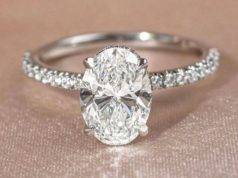GIA remains the unrivaled standard in diamond grading. Other labs may adhere to looser standards when it comes to lab-grown diamonds; as a buyer you should take great caution when shopping for them.
As soon as GIA refused to grade lab-grown colorless diamonds, IGI became the world’s go-to lab for certification of these stones. Since then, they have started back up grading lab-grown diamonds again although IGI remains the dominant player in this regard. You can compare between igi vs gia.
1. GIA Certification
GIA is widely recognized as a premier independent diamond certification authority. Renowned for their stringent grading ethics, daily research initiatives and diamond testing tools as well as training graduate gemologists all over the globe, they are widely respected.
Grading reports issued by GIA are widely considered the gold standard by jewelers worldwide. Each step in their evaluation process is overseen by at least four experienced gemologists from GIA.
GIA utilizes an identical system for rating lab-grown diamonds as they do natural earth-grown stones – this includes four Cs: Cut, Color Clarity and Carat Weight. Compare and check out the igi vs gia lab grown Diamonds.
2. IGI Certification
IGI is a gemological institute that grades natural and lab grown diamonds as well as colored gemstones for jewelry pieces, providing reports for each.
Grading diamonds establishes the all-important 4Cs: cut, color, clarity and carat weight. Overgraded stones will cost more, so selecting a laboratory with a rigorous diamond grading process is crucial to selecting an affordable gem.
IGI is one of the leading lab-grown diamond grading authorities worldwide and were among the first to provide reports for entire jewelry pieces.
IGI Grading reports provide information about lab-grown diamond’s color, clarity and carat weight as well as shape and faceting style type, along with a diagram depicting its clarity characteristics.
3. GIA Appraisals
GIA Appraisals provide an accurate valuation of jewelry. For optimal results, choose appraisals written by certified gemologists or insurance appraisers from GIA.
When purchasing a diamond, it’s essential to know if it was mined or lab-grown. Most jewelry retailers lack experience assessing lab-grown diamonds so obtaining an appraisal incorporating the GIA grading system is critical for purchasing such gems.
A GIA Grading Report is one of the most respected diamond certifications available today, providing precise gradings for qualities like Color and Clarity. Unfortunately, GIA does not grade lab grown diamonds the same way they grade mined ones.
Recently, GIA refused to accurately grade lab-grown diamonds; therefore, IGI stepped in as the world’s premier lab for lab grown diamonds. Their report provides both color and clarity grades – the most comprehensive certification available for lab grown diamonds; thus most top lab grown retailers now choose IGI for certification purposes.
4. GIA Reports
As with mined diamonds, the GIA grades lab-grown diamonds using their 4 Cs system – cut, clarity, color and carat weight of each diamond as well as proportions, inclusions, polish and fluorescence details. In addition, GIA reports provide details regarding proportions, inclusions polish fluorescence.
Prior to its announcement, the GIA only provided full grading reports on mined diamonds; now however, they will begin offering lab-grown diamond grading reports online, increasing transparency within this sector of industry while providing consumers with informed decisions when it comes to making informed purchases.
GIA reports for laboratory-grown diamonds will indicate their origin with an engraving that details CVD or HPHT growth methods used, and any post-growth treatments which changed color or clarity after they had formed.











